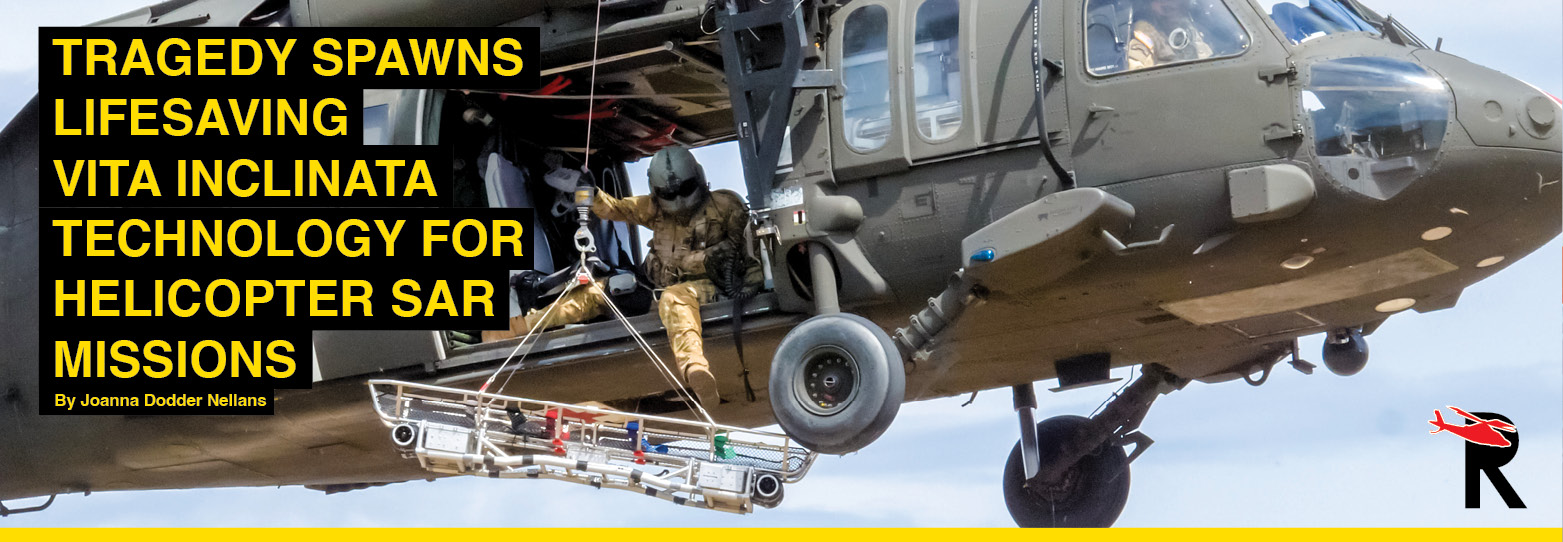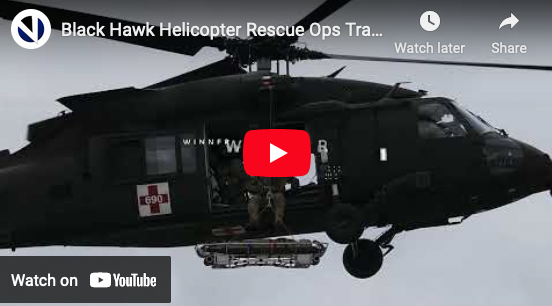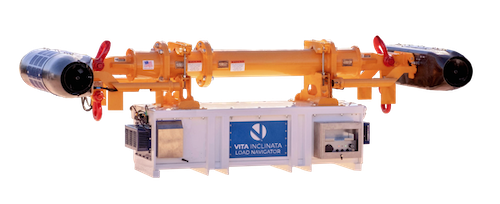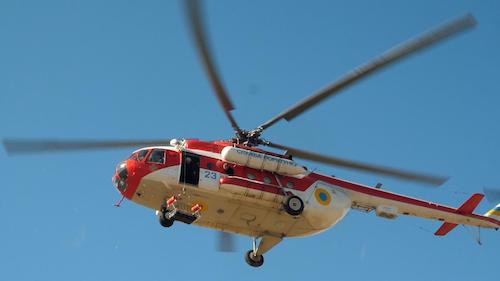|
Sep
05
2022
|
|
Posted 3 years 114 days ago ago by Admin
|
|

More than 10 million people viewed Phoenix TV station footage of an injured hiker spinning uncontrollably in a helicopter rescue basket three years ago, after one of the two stabilization ropes broke and the helicopter's rotor wash wildly rotated the litter for more than a minute.
While the rotations didn't injure the woman and the viral video spawned countless humorous memes, the woman didn't think it was too funny. She sued the City of Phoenix and won a $450,000 settlement.
Such violent spinning can lead to much, much worse outcomes. Caleb Carr knows this all too well.
Carr was a 15-year-old Multnomah County (Oregon) Search and Rescue volunteer tech involved in a 2009 night training mission on Larch Mountain when his instructor, mentor and friend went into cardiac arrest. A helicopter quickly arrived to hoist his friend with a rescue litter and transport him to a medical facility. But tragically, gusty winds and rotor wash stymied multiple attempts to safely control and drop the stretcher. Carr's friend died on that mountain.
Carr later learned that the inability to deploy rescue litters in challenging conditions is a common problem. Historically, the primary way to stabilize a load during hoist operations is a tagline, with one or two people on the ground holding ropes attached to the litter. During complex Search and Rescue operations having taglines is often impossible.
When Carr enrolled in the University of Colorado medical school with a goal to save lives, his professor challenged him to solve the ubiquitous rescue basket problem. Carr took the challenge to heart.

Carr partnered with mechatronics engineer Derek Sikora and cofounded Vita Inclinata (Latin for "Life Inclined") Technologies in 2015 with one mission: "Bring them home, every time." The Vita team grew quickly and developed the Vita Rescue System with the help of U.S. Small Business Innovation Research program grants through the Air Force.
Thirteen years after Carr's friend died, the one-of-a-kind Vita Rescue System is now well on its way to saving countless lives. The system consists of a litter attachment that's compatible with a variety of rescue kits, as well as a wireless pendant that can control the litter from as far away as 1,000 feet.
"Whatever the cause for the motion, the Vita Rescue System senses this motion, autonomously computes the best course of action to stabilize the motion, then stabilizes the rescue hoist cable utilizing electric propulsion," explained Sikora, chief technology officer for Vita Inclinata.
Vita Inclinata leaders understand the military can benefit the most from their innovative technology, and hired Carl Riedlin as VP of federal programs to bring helicopter rescue and federal government experience to the company.
Riedlin, who spent 31 years as a Coast Guard pilot involved in countless search and rescues, is closing out his career as its Chief of Aviation.
"I've seen videos of taglines that got sucked into tail rotors and crashed the helicopter," Riedlin related. And in combat situations, the sheer time involved in stabilizing a litter leads to more opportunities for the enemy to shoot down the rotorcraft or attack the troops who are on the ground holding the litter lines.
"We've got National Guard units chomping at the bit to deploy this thing," Riedlin said of Vita Inclinata's invention, adding, "The great part about the National Guard is the dual purpose." The Guard can use the system for military operations as well as local civilian rescues.
"I've dedicated myself to saving lives, and Vita shares this passion," Riedlin said. "Their lifesaving technology transforms the way rescues are performed."
Vita Inclinata has been working with the National Guard in 13 states to evaluate its Vita Rescue System (VRS) for operational effectiveness and suitability. An impressive video of a Montana National Guard Black Hawk exercise featuring Vita competing against a legacy rope system shows Vita finishing three hoists in the time that it takes a traditional system to complete just one hoist.

The U.S. Army bought 15 Vita Rescue Systems late last year. The VRS is undergoing environmental and operational testing at the Army's Aeromedical Research Lab in Fort Rucker, Alabama. The Army's National Guard units and active duty combat aviation brigades also will conduct operational user evaluations. The Air National Guard now has an appropriation in the books to purchase the rescue systems, Riedlin added, and the Coast Guard starts baseline testing this fall.
The civilian company Two Bear Air Rescue in Montana also has been helping to test the system.
How the Vita Rescue System works
The Vita Rescue System utilizes four high-speed ducted fans that spin at 39,500 rpm to produce a total of 70 pounds of thrust, Riedlin explained. Operators can simply turn on the auto stabilization mode, or choose direct control and manually rotate the litter right or left and avoid objects such as trees or walls.
"The composition of the VRS is similar to that of a high-powered drone," Sikora explained before listing the components: "MEMS sensors sense the hoist motion and environmental data; a high powered, smart, cold-swappable battery system powers a ruggedized electric propulsion system, producing thrust to stabilize the load; the embedded computer(s), the 'brain' of the VRS which essentially operate similar to an aircraft flight computer, communicates with the VRS control pendant."

The shell and structural elements of the system are produced with a proprietary thermoformed composite and polymer material that has an incredible strength-to-weight ratio, Sikora added.
The U.S. military obviously wants to use the system in challenging conditions, so it features protection from weather, water and dust, Riedlin said. And its two stable lithium-ion batteries can be swapped in flight for spares.
Vita Inclinata production quadruples to help Ukraine and other countries
This is a huge year for Vita Inclinata. With a production model in hand, the company announced in May that it already has quadrupled its manufacturing lines and added extra shifts to meet the global demand for its rescue and load stabilization technologies from the U.S. military as well as Chile, Japan, Portugal and Ukraine. The UAE is already using it for search and rescue, Riedlin said.
The company is employing vertical supply chain integration principles to reduce costs and provide greater control of its product assembly. These measures include using 3D printers to produce components, using mobile tablets to manage workflows quicker, and licensing various technologies that were previously outsourced to third parties.

At Ukraine's request, Carr traveled to that country's war zone to teach medevac troops how to use the VRS. The country currently has no medevac capabilities, he said in his blog about his experience. After roadblocks, air raid sirens, interrogations and a long road trip, Carr and his videographer Scott Slack reached Uzhgorod in southwest Ukraine to train troops in Russian-contested airspace.
"At each obstacle we found a way, and through that process I learned a lot about Caleb’s resourcefulness and determination," Slack added on Carr's blog.
The Ukrainian military has requested 30 more Vita systems, Riedlin related. Carr already provided training and the first system at no cost.
"It's a great opportunity for us to help the Ukrainian people and really get our technology out there where it matters the most," Riedlin said.
Other products help industrial crane lifts
Vita Inclinata didn't stop with the rescue system; it invents and builds a variety of precision aerospace and industrial stabilization devices that vastly improve upon taglines and counterweights with vector thrust.
Vita's load pilot lifting system allows companies to remotely control crane lifts, while its heavier-duty load navigator mounts to spreader bars and handles loads that weigh more than 25,000 pounds.
Now Vita is developing its Precision Rapid Aerial Extraction System for precision air drops and airlifts.
"Technology that improves worker safety or ensures a positive outcome from a search and rescue mission should be ubiquitous," Carr said in a news release. "Vita is making it our mission to meet the need of every organization who expresses interest in our technology by broadening our capacity to quicken the pace at which it can be deployed to save lives."
READ MORE ROTORCRAFT PRO: https://justhelicopters.com/Magazine
WATCH ROTORCRAFT PRO YOUTUBE CHANNEL: https://buff.ly/3Md0T3y
You can also find us on
Instagram - https://www.instagram.com/rotorcraftpro/
Facebook - https://www.facebook.com/rotorcraftopro/
Twitter - https://twitter.com/justhelicopters